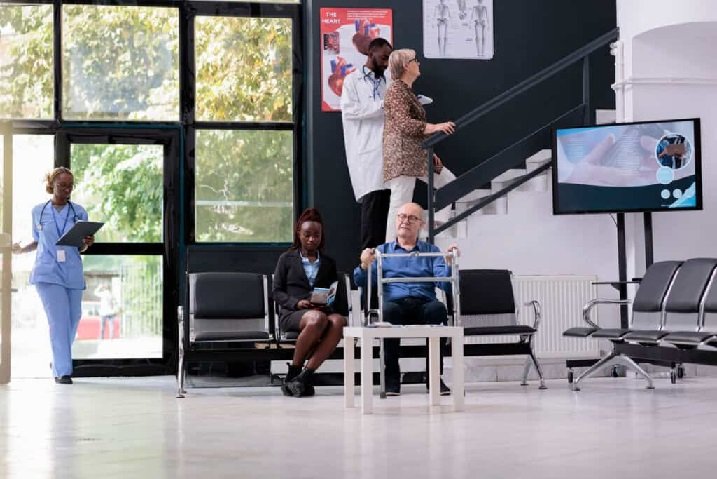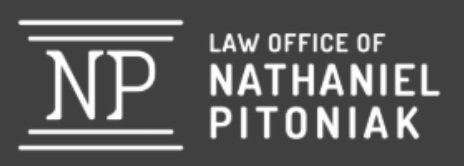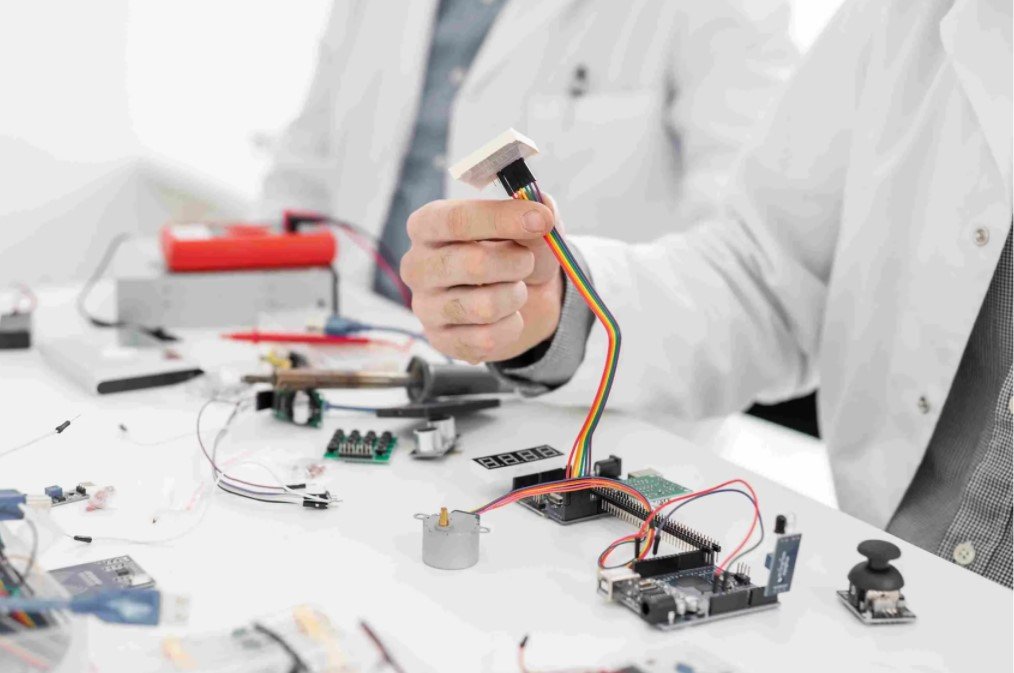Introduction
Long corridors, unclear directions, and crowded spaces often leave patients and visitors feeling overwhelmed. That’s where clear and thoughtful healthcare digital signage makes all the difference.
When signage is easy to follow, your patients can find their way without frustration, reducing delays and creating a calmer environment.
Visitors feel less anxious, and staff spend less time giving directions, focusing instead on patient care.
It’s a simple solution that helps everyone. Modern healthcare signage not only improves navigation but also creates happier, less stressed patients.
Challenges of Traditional Healthcare Signage
Traditional healthcare signage often struggles to meet the demands of modern healthcare facilities. From outdated designs to accessibility gaps, these challenges can directly impact your patient satisfaction and operational efficiency.
Static and Outdated Designs
Static signs can’t adapt to the dynamic nature of healthcare. Whether it’s a department relocation, schedule change, or construction project, static signage leaves your patients and visitors confused and frustrated.
Overwhelming Environments
Healthcare facilities are often sprawling, with multiple departments, floors, and entry points. Without clear signage, your patients can feel lost in a maze, leading to missed appointments and unnecessary stress.
Lack of Accessibility
Your traditional healthcare signage often falls short in catering to diverse patient needs. Small fonts, poor visibility, and the absence of braille or multilingual options make navigation difficult for your patients with disabilities or those who speak different languages.
These challenges highlight the need for a modern solution like digital signage software, which can address these issues with real-time updates, dynamic designs, and inclusive features.
How Digital Communication Enhances Healthcare Signage
Modern healthcare signage leverages technology so you can create a more welcoming, efficient, and patient-centric environment. Here’s how:
Real-Time Updates for Peace of Mind
With digital communication, you can provide real-time updates on wait times, appointment changes, or facility notices.
Your patients will know exactly when the doctor is ready or be instantly informed about any delays. This transparency reduces anxiety and helps patients feel more in control of their healthcare journey.
Interactive Wayfinding for Easy Navigation
Interactive kiosks and digital maps allow patients to input their destination and receive step-by-step directions. This personalized guidance ensures they get where they need to go without unnecessary stress, making your healthcare signage a tool for comfort.
Multilingual Support for Inclusive Care
Your patient community is diverse, and language should never be a barrier to care. Digital signage can display information in multiple languages at the touch of a button.
By making your healthcare signage accessible to non-English speakers, you show a commitment to inclusive, patient-centered care.
Accessible Features for All Patients
Digital communication allows you to incorporate features like audio assistance for the visually impaired or touchscreens designed for those with mobility challenges.
By enhancing your healthcare signage with these accessible options, you ensure every patient feels considered and supported.
Engaging Content to Educate and Inform
Beyond directions, digital signage can share health tips, wellness programs, or hospital news. While your patients wait, they can engage with content that educates and empowers them. This turns idle time into an opportunity for learning, further enhancing their experience.
Efficient Communication During Emergencies
In critical situations, every second counts. Digital healthcare signage can broadcast emergency alerts, safety instructions, or evacuation routes instantly.
This immediate communication keeps patients and staff safe, demonstrating your facility’s commitment to their well-being.
Tips for Implementing Effective Healthcare Signage
To make sure your healthcare signage truly helps patients and visitors, it’s important to plan thoughtfully and focus on their needs. Here are some tips to get it right:
- Understand Patient Journeys: Map out common patient pathways to identify pain points where clear signage can reduce confusion and stress.
- Choose Digital Signage Software: Use tools that allow for real-time updates, multilingual options, and accessible features. This ensures your signage is always accurate and helpful.
- Test with Real Users: Involve patients and visitors in testing your signage. Their feedback can highlight areas for improvement and ensure the final design is user-friendly.
- Keep Messages Simple: Avoid clutter and use concise, clear instructions. Patients under stress need straightforward directions they can process quickly.
- Prioritize Accessibility: Ensure your signage includes options like audio guidance, braille, and high-contrast designs for patients with disabilities.
- Train Staff: Make sure your team understands how to use digital tools and guide patients effectively when needed.
- Place Signage Strategically: Install signs at key decision points like entrances, elevators, and intersections to help patients navigate easily.
By focusing on these tips, your healthcare signage can make every visit less stressful and more straightforward for patients and visitors alike.
Designing Signage for Different Healthcare Spaces
Effective healthcare signage isn’t one-size-fits-all. Each area in your facility has unique needs, and tailoring signage to these spaces makes navigation easier for everyone.
- Emergency Rooms: Use bold, high-visibility signage with clear directions to critical areas like triage, waiting rooms, and exits.
- Outpatient Clinics: Provide detailed yet simple directions to help patients find specific departments or doctors quickly.
- Waiting Areas: Use digital signage to share wait times, announcements, or health tips to keep patients informed and engaged.
- Specialized Departments: Customize signage with specific icons or colors to help patients easily identify areas like pediatrics, radiology, or labs.
- Amenities: Ensure clear signage points to restrooms, cafeterias, and parking areas to make the overall experience smoother for patients and visitors.
By designing signage to fit the needs of each space, you’re helping patients and visitors navigate your facility with confidence and ease.
Final Thoughts
Clear and effective healthcare signage isn’t just about directions—it’s about reducing stress, saving time, and creating a more welcoming environment for patients and visitors.
When patients can navigate your facility with ease, they feel more at ease, leading to a smoother and more positive experience overall.
That’s where L Squared can make a difference. From consultation to deployment, we provide patient-focused, dynamic solutions tailored to your facility’s needs. With features like real-time updates, multilingual support, and accessibility options, L Squared’s digital signage software ensures your signage does more than guide—it cares for everyone who steps through your doors.
Let us help you design signage that’s simple, effective, and makes every visit to your facility a little happier. Ready to take the first step? L Squared is here to help.
Refresh Date: August 21, 2025









